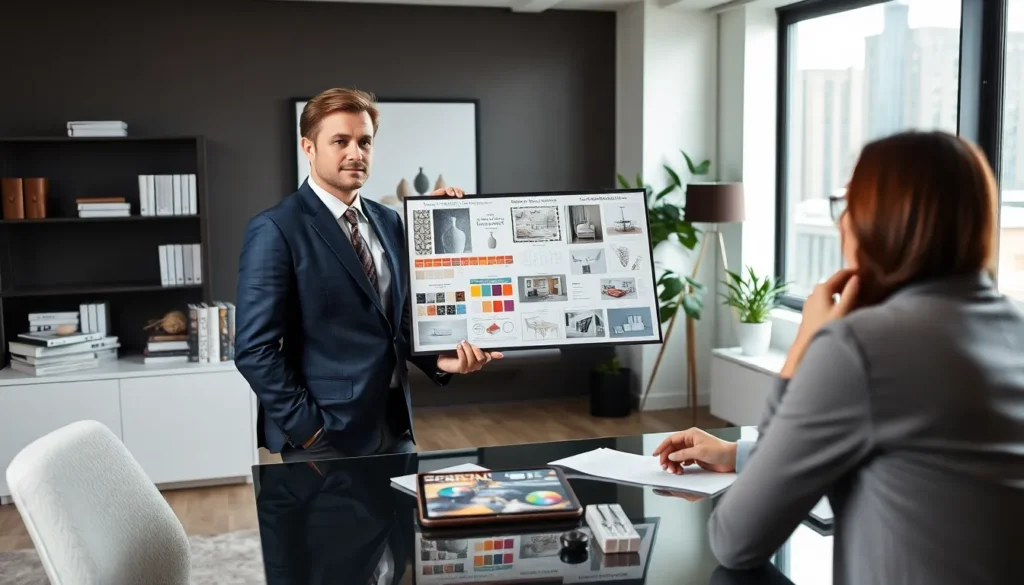Table of Contents
ToggleEvery homeowner or business manager dreams of a space that not only looks good but feels good too. Enter the world of interior design, a process that can turn the mundane into the magnificent. Imagine crafting a haven where each room reflects personality and purpose. Sounds dreamy, doesn’t it? But like any masterpiece, the journey begins with a solid foundation. Let’s jump into the interior design process, explore its layers, and uncover what makes spaces truly shine.
Understanding the Basics of Interior Design

Interior design is more than just arranging furniture or picking paint colors. It’s about creating a cohesive environment that resonates with its occupants. One of the first steps in this creative adventure is understanding the significance of a design brief.
The Importance of a Design Brief
A design brief is like the blueprint for a building: it outlines the scope, goals, and limitations of the design project. It helps designers grasp the client’s vision and requirements. This document can specify everything from styles and color preferences to budget considerations. Essentially, it’s the designer’s map, guiding them through the intricate pathways of creativity and practicality.
Key Components of the Design Process
To truly grasp the interior design process, one must break it down into its core components. Each part plays a crucial role, contributing to the overall flow and success of the project.
Research and Inspiration
To kick things off, extensive research is initiated. Designers pour over magazines, visit showrooms, and browse online platforms. They seek inspiration from various sources, nature, art, architecture, and more. This phase is vital: fresh ideas often spark revolutionary concepts.
Concept Development
Next up is concept development. Here, the designer synthesizes their research into a tangible vision. They begin sketching layouts and exploring color palettes, materials, and textures. Clients are typically involved at this stage as their feedback is invaluable. This collaboration can ignite inspiration, often leading to delightful surprises in design direction.
Design Development
Once the concept is agreed upon, the design development phase begins. It involves further refining the proposed ideas by creating detailed drawings, selecting finishes, and considering furniture styles. This phase often feels like delving into the nitty-gritty. Designers practically live in showrooms, discovering furniture that will marry function and beauty.
Finalizing the Design Plan
Finalizing the design plan is one of the most exciting parts of the process. Designers prepare to bring their vision to life, ensuring every detail is in place. Budget reviews, timelines, and resource allocations come into play. This is where organization becomes paramount. A detailed plan helps keep the project on track and ensures all parties are on the same page. Clear communication with clients means any last-minute adjustments or concerns can be addressed without a hitch.
Implementation and Project Management
With the design plan set, it’s time for implementation. This stage transforms blueprints into reality.
Project management skills come to the forefront. Designers coordinate with contractors, oversee installations, and ensure that tasks progress smoothly. This includes everything from paint application to furniture placement. Attention to detail during this phase can dramatically affect the end result, making it crucial for the designer to maintain a firm grip on the project’s timeline and budget.
Review and Evaluation of the Project
Finally, once the project reaches completion, it’s time for a review and evaluation. This stage isn’t just a concluding formality: rather, it’s an opportunity to assess what worked well and what didn’t. Designers often invite clients to walk through the space, sharing insights and gathering feedback. Perhaps the arrangement feels perfect, or maybe a particular corner needs adjustment. This reflective process ensures the design is both functional and aesthetically pleasing. Besides, it sets the stage for potential future projects by documenting learned lessons.




